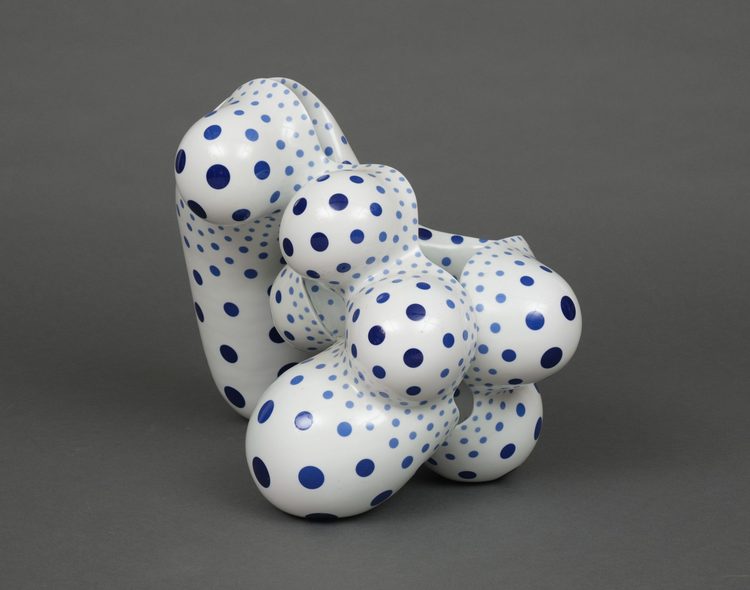A LARGE PORCELAIN BIOMORPHIC SCULPTURE BY HARUMI NAKASHIMA, 2011
A large porcelain biomorphic abstract sculpture covered in clear glaze and regularly distributed opulent cobalt blue polka dots of varying sizes, titled ‘Twisting Back, Multiplying’, hand-built by the famous Japanese ceramic artist Harumi Nakashima 中島晴美 (1950). Signed at the bottom in a dot ‘1104 晴’ (1104 Haru). Made in 2011.
Height 41 cm, Width 53 cm, Depth 33 cm.
In an excellent condition.
CATALOGUE NOTE Born in 1950 in Ena, Gifu Prefecture, Harumi Nakashima 中島晴美 is known for his biomorphic porcelain sculptures decorated with opulent blue dots. He excels in clay creations far removed from both tradition and functionality. Taking great care to achieve a flawless surface and form, each piece is created over the course of six months. Nakashima’s early reputation was cemented as one of the leading teachers at the Tajimi Pottery Design and Technical Center, having trained and influenced many of the promising young ceramicists of Japan since 1976. Nakashima has received leading prizes and tributes. With works collected by 20 public institutions the world over, including the Museum of Arts and Design in New York and the Faenza Ceramics Museum in Italy, he is one of Japan’s most celebrated porcelain artist. Influenced by the blue sometsuke (under-glaze) motifs of traditional Japanese porcelain, Nakashima’s motifs also use cobalt blue over-glaze. Yet unlike traditional methods, Nakashima’s blue dots are painted over the body of a work after the main firing, and then fired into the white glaze of the porcelain with a second firing using the technique of “in-glazing”, thereby leading to the sinking of the dots upon the white overglaze. Perhaps more surprising is the fact that his organic, sprawling and fluid porcelain bodies are entirely hand-built. As porcelain is extremely difficult to manipulate by free-hand, Nakashima intentionally uses this method to create not only tension, but an epic “battle with clay”.






